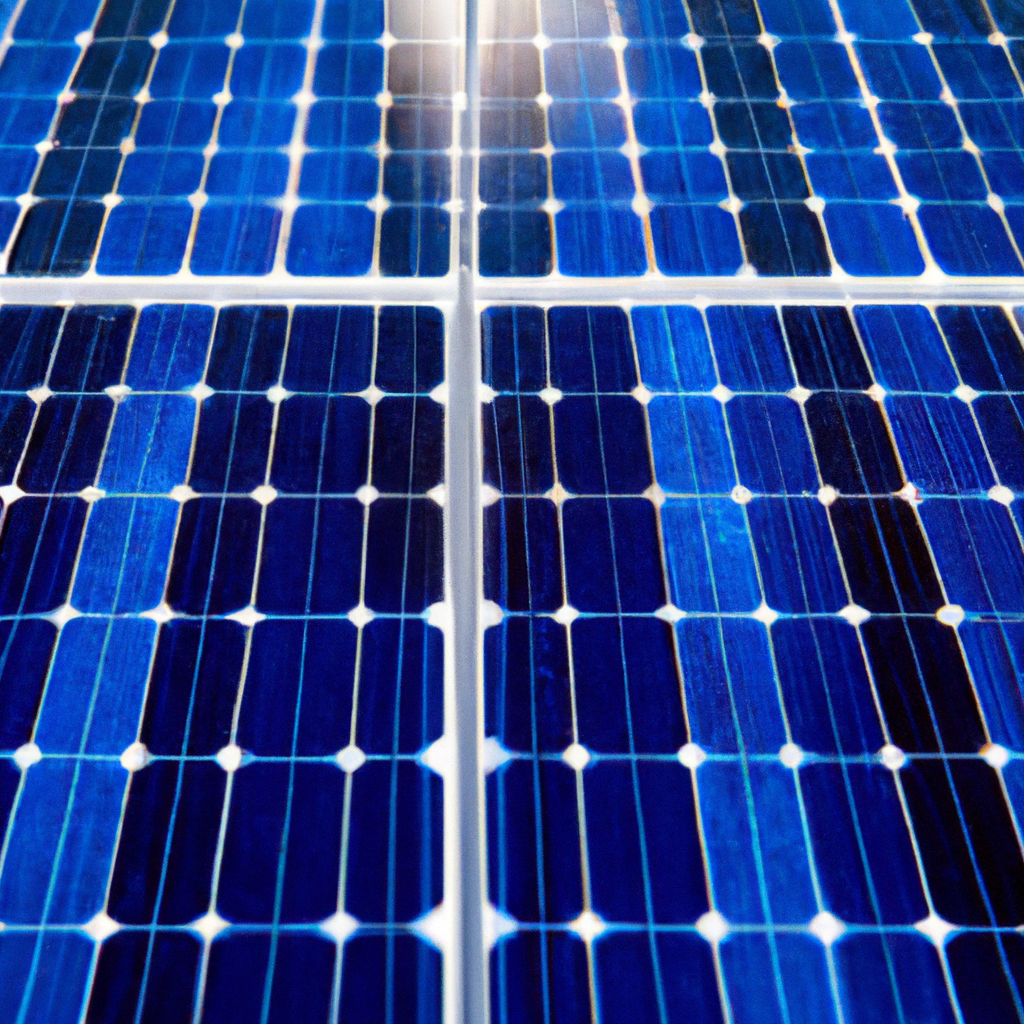As the world continues to prioritize sustainable energy sources, the focus on solar power has been immense. Solar panels have become a common sight on rooftops and in large-scale solar farms. However, there are other eco-friendly materials that are making waves in the clean energy industry. In this article, we will explore these groundbreaking materials that are shaping the future of clean energy and how they are revolutionizing the way we generate power.

1. Geothermal Heat Pumps: Tapping into the Earth’s Energy
Geothermal heat pumps utilize the natural heat stored beneath the Earth’s surface to provide heating and cooling for buildings. This innovative technology takes advantage of the stable temperature of the ground to efficiently transfer heat. By using geothermal heat pumps, we can significantly reduce our reliance on traditional heating and cooling systems that consume large amounts of energy.
Geothermal heat pumps have a minimal environmental impact and can significantly reduce greenhouse gas emissions. With proper installation and maintenance, these systems can provide reliable and efficient heating and cooling for residential and commercial buildings alike.
2. Biomass Energy: Harnessing the Power of Organic Matter
Biomass energy involves the utilization of organic matter, such as wood pellets, agricultural waste, and dedicated energy crops, to generate heat and electricity. This renewable energy source is carbon-neutral, as the carbon dioxide released during combustion is offset by the carbon dioxide absorbed by the plants during their growth.
In addition to providing a sustainable energy solution, biomass energy also helps in waste management by utilizing organic waste that would otherwise end up in landfills. By harnessing the power of biomass, we can reduce our reliance on fossil fuels and contribute to a greener future.
3. Wind Turbines: Capturing the Power of the Wind
Wind turbines have long been recognized as a clean and renewable energy source. These towering structures harness the power of the wind to generate electricity without any harmful emissions. Wind farms, consisting of multiple wind turbines, have become increasingly common in many countries around the world.
The development of more efficient wind turbine designs and advancements in technology have significantly increased their energy output. With larger rotor diameters and taller towers, wind turbines can capture more energy from the wind, making them even more effective in generating clean power.
4. Hydroelectric Power: The Age-Old Source of Renewable Energy
Hydroelectric power has been used for centuries and continues to be a reliable source of clean energy. By harnessing the power of flowing water, hydroelectric dams generate electricity without emitting greenhouse gases. This renewable energy source is highly efficient and can provide a consistent power supply.
However, the construction of large-scale hydroelectric dams can have environmental consequences, including habitat disruption and altered river ecosystems. To mitigate these impacts, smaller-scale run-of-river hydroelectric projects and innovative fish passage systems are being implemented to ensure the sustainability of hydroelectric power.
5. Tidal Energy: Riding the Waves of the Future
Tidal energy is a form of hydropower that harnesses the natural rise and fall of tides to generate electricity. By utilizing underwater turbines, tidal energy systems can convert the kinetic energy of the moving water into electrical power. Tidal energy is predictable and consistent, making it a reliable renewable energy source.
While tidal energy is still in the early stages of development, it holds great potential for coastal regions. With advancements in technology, tidal energy could become a significant contributor to a sustainable energy future, reducing our dependence on fossil fuels.
6. Concentrated Solar Power: Maximizing the Sun’s Energy
Concentrated solar power (CSP) is a technology that uses mirrors or lenses to concentrate sunlight onto a receiver, which then converts it into heat or electricity. Unlike traditional solar panels, CSP systems can store the captured energy for use during cloudy periods or at night.
CSP plants can be combined with other thermal energy storage systems, such as molten salt, to provide uninterrupted power generation. This technology is particularly beneficial in regions with abundant sunlight and large-scale power needs.
7. Wave Energy: Riding the Swells for Clean Power
Wave energy, also known as ocean energy, harnesses the power of ocean waves to generate electricity. Various methods, including floating devices and submerged buoys, are used to capture the energy from the rhythmic movement of the waves.
Wave energy is a promising renewable energy source, especially for coastal areas with access to the ocean. Ongoing research and development efforts aim to improve the efficiency and reliability of wave energy systems, making them a viable option for clean power generation.
In conclusion, the future of clean energy extends beyond solar power. Geothermal heat pumps, biomass energy, wind turbines, hydroelectric power, tidal energy, concentrated solar power, and wave energy are all eco-friendly materials that are shaping the sustainable energy landscape. By embracing these innovative technologies, we can reduce our carbon footprint and pave the way for a greener and more sustainable future.